Three rovers, six American flags, dozens of probes on the moon or crashed on the surface, tools, cameras, waste, etc. In short, hundreds of objects dot the Moon. However, instead of seeing them as a collection of residue, experts prefer to register them as "lunar heritage of humanity".
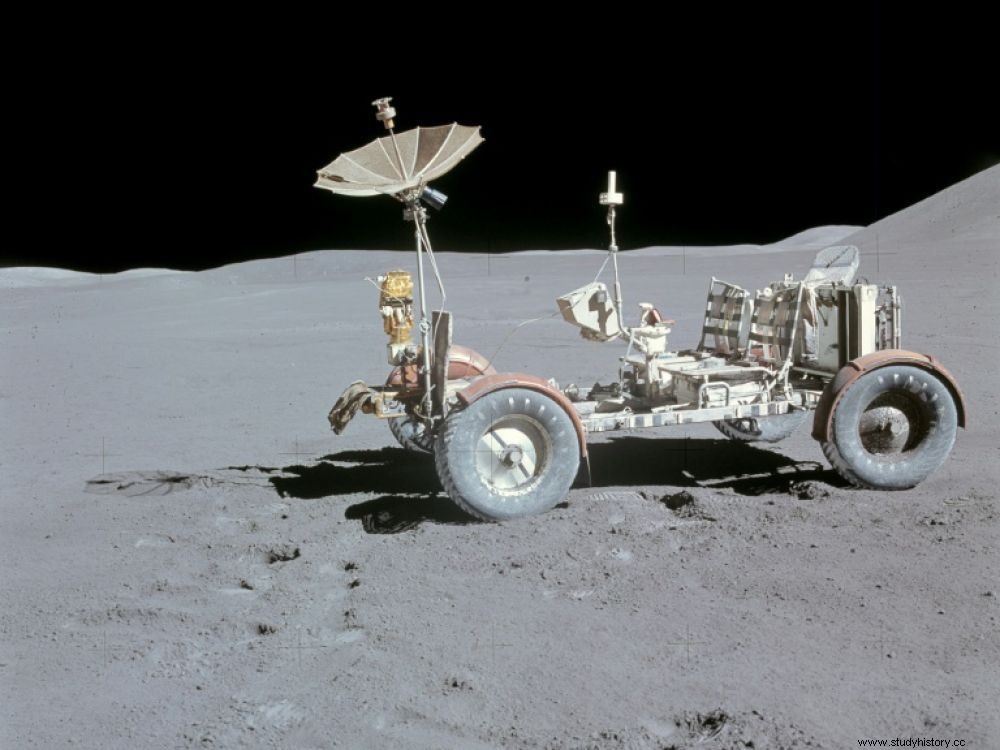
The Apollo 15 rover on the Moon, August 1, 1971.
In total, our natural satellite today has about a hundred sites where human traces persist, according to the organization For All Moonkind. Still according to her, there would be at least 167 tons of material lying on the lunar ground.
The first probes and landers lunar sent
The first object to come into contact with the Moon was Luna 2 on September 13, 1959. Sent by the USSR in the context of the "space race" with the United States, this 390 kilos crashed into the Sea of Rains, and was presumably vaporized on impact. Then, other probes and landers succeeded, through the space programs:Luna for the Soviets, Ranger and Surveyor on the American side.
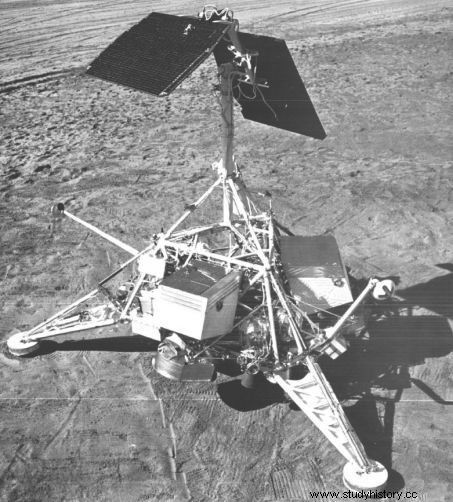
Surveyor Mock-Up, NASA's lunar lander (1966). Credit:NASA.
The first humans to walk on the Moon
It took until July 20, 1969 for the first men to set foot on the lunar soil. The lucky winners were Americans Neil Armstrong and Buzz Aldrin. Before taking off again, the two astronauts spent a total of 22 hours in the Sea of Tranquility, and left behind all unnecessary loads such as the Lunar Module Descent Stage (LEM), cameras, boots, pliers , commemorative objects and four "defecation collection devices ". Nasa identified at that time about fifty objects. Subsequently, five Apollo crews were also able to go there and would have left hundreds of additional objects.
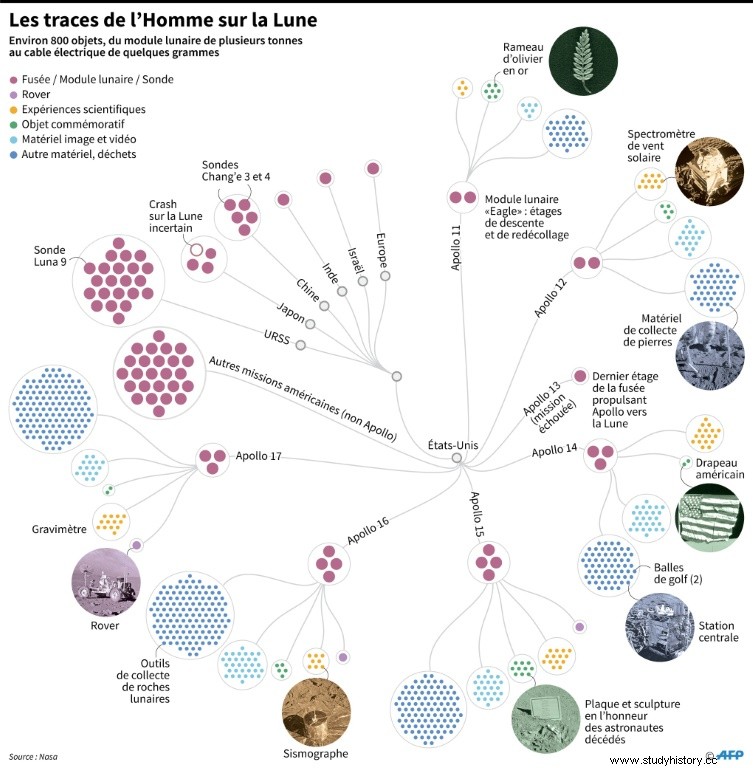
Man's footprints on the Moon. Credit:AFP - Simon MALFATTO.
The Battle of For All Moonkind :protect the vestiges witnesses of the lunar exploration
The idea to create For All Moonkind came in 2017 following a joke by the director of the European Space Agency (ESA), Jan Wörner, saying he wanted to return to the Moon to bring back an American flag. Legally, "sites are not protected at all ", says Michelle Hanlon, professor of law at the University of Mississippi and co-founder of the association. "If someone wants to get closer to the LEM, nothing in international law prohibits driving a rover to him ", she worries.
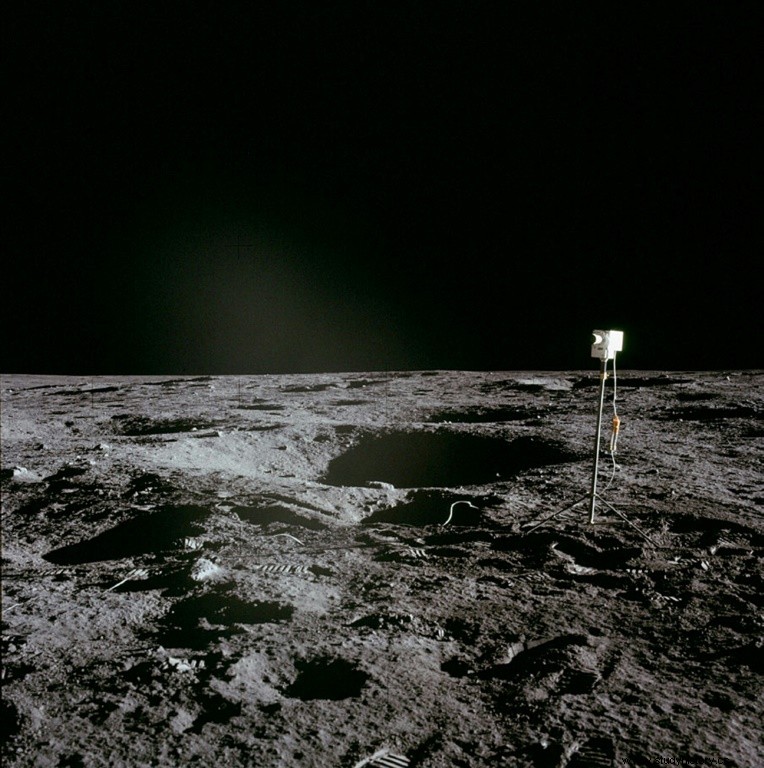
A camera left by the crew of Apollo 12 on the Moon in November 1969. Credit:NASA/AFP - Handout.
Thus, "l footprints, rover tire tracks, and places with very archaeologically significant objects have no protection ", explains Ms. Hanlon to AFP. She fears that in the near future, tourists will destroy the Apollo sites insofar as the slightest projection of lunar dust on the equipment is likely to damage it (this one is also sharp than glass.) That's why "n we need safeguards against accidental or deliberate acts ."
A will in contradiction with the Outer Space Treaty?
Faced with these concerns, NASA has adopted "recommendations ", such as not landing within 2 km of the Apollo sites. In the same vein, senators tabled a text in the US Congress to create de facto protected cultural heritage sites, and prohibited areas. However, some like space law professor Jack Beard argue "preventing countries from freely using and exploring space is contrary to a fundamental tenet of the Space Treaty ".
Indeed, the Outer Space Treaty established in 1967 is very clear on this subject:the Moon "cannot be the object of national appropriation by proclamation of sovereignty, nor by way of use or occupation ". The treaty also indicates that any space object must be registered by a State, which is permanently responsible for it. At the same time, any theft, for example of Apollo souvenirs, is prohibited by the text. These points were intended to limit the risk of lunar anarchy and leave ownership of the objects to the country that launched them, wherever they are in the Universe.
If we stick to the treaty, the Moon will become the "Wild West "
But the shortcomings of space law are of concern to lawyers, space agencies and the United Nations, and not only for the protection of heritage. Lunar traffic will undoubtedly come to fruition in the coming decades and it is obvious that the nebulous principles of cooperation that are enshrined in this treaty will not be enough to regulate this reality. With proof, in 2019 alone, the Moon was the scene of two new moon landings:a Chinese robot and a private Israeli probe crashed there. In addition, India will send a probe very soon. Also, the Americans will send their cosmonauts to the South Pole in 2024.
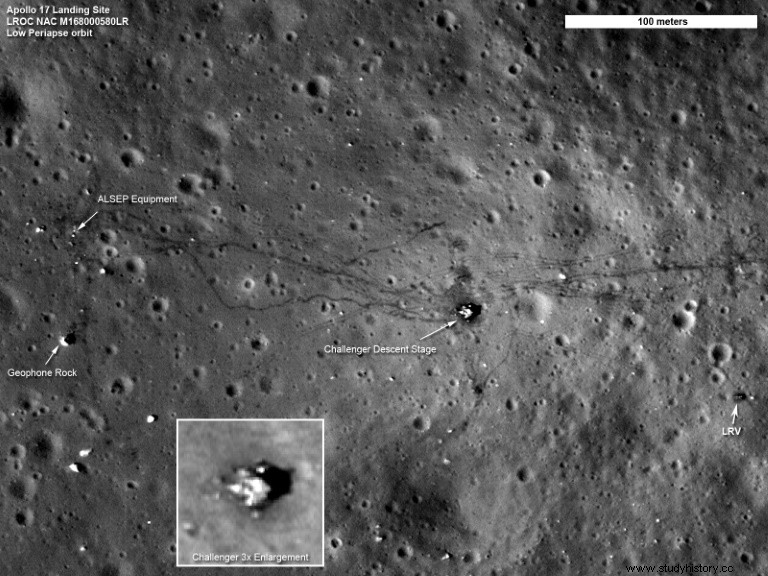
Photo taken by the American LRO satellite on September 6, 2011 of the Apollo 17 landing site in 1972, where traces of the rover can be seen. Credit:NASA / GSFC / ASU/AFP/Archives - HO.
Hundreds of space start-ups have since sprung up, many of which want to exploit the water and mineral resources of the Moon and asteroids. "Clearly there is potential for conflict “, told AFP Tanja Masson. “There need to be rules so that it does not become the Wild West ". This professor of space law, at the University of Leiden in the Netherlands, suggests the creation of an international body to fairly distribute priority rights, without granting sovereignty, as is done to manage satellites in geostationary orbit. As for the risk of "pollution ", she answered that it will be necessary "perhaps to provide waste dumps on the Moon ".
By Margaux Abello with AFP.
